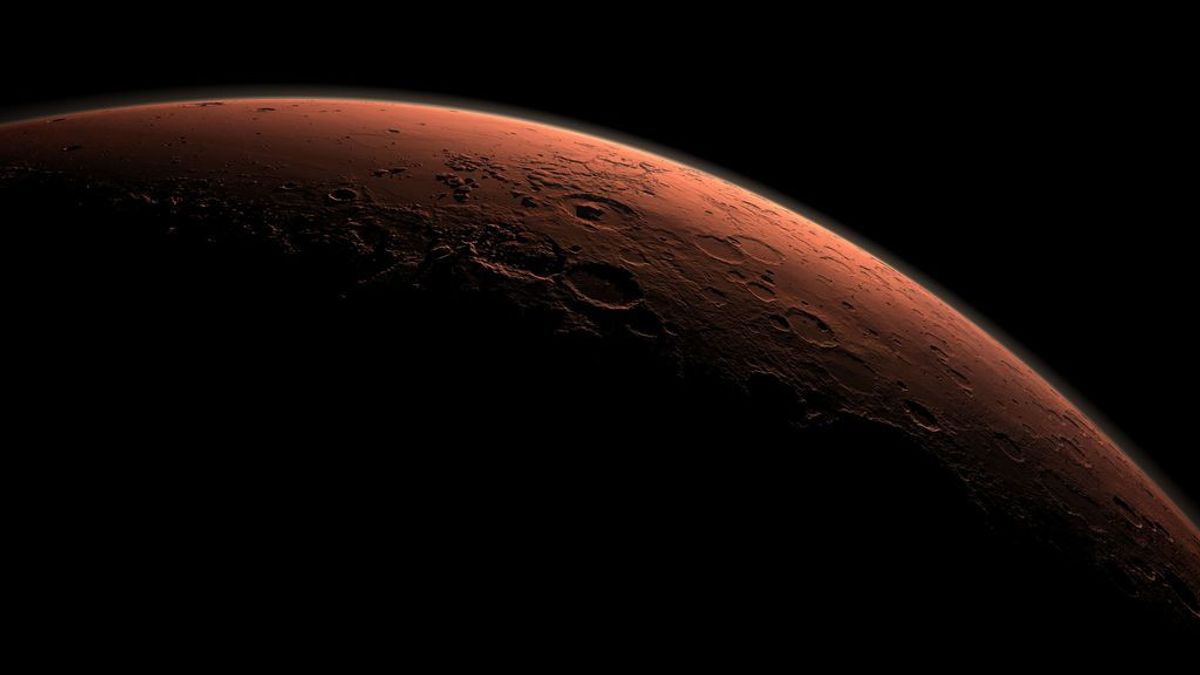JAKARTA - NASA's lander robot, InSight has just heard and detected the vibrations of four space rocks as they hit Mars over the past two years.
This event is the first time a mission has captured seismic and acoustic waves from the impact of collisions on Mars, and detected InSight's first impact since landing on the Red Planet in 2018.
A new paper published recently in the journal Nature Geoscience details the impacts ranged from 53 and 180 miles (85 and 290 kilometers) from the InSight location, the Martian region called the Elysium Plmiti, a fineland that is just north of the equator.
Entering the Martian atmosphere on September 5, 2021, the meteoroid exploded into three fragments which each left the crater.
Then NASA's Mars Reconnaissance Orbiter, a satellite stationed in Mars orbit to study the Red Planet in 2006, flew above a location estimated to be affected to confirm the location. The orbiter used a black-and-white Kontext Camera to reveal three dark spots on the surface.
After finding these points, the orbiter team used the High-Resolution camera Imaging Science Experiment, or HiRISE to get the crater color up close.
The effects of meteoroids form the planet's surface and sprinkle its atmosphere with ecogen volatiles. The mechanical waves generated by the collision are used to conclude the planet's atmospheric and interior structures and to investigate the current collision process of the planet, the researchers said.
Furthermore, quoted from NASA's official website, Tuesday, September 20, the researchers also found three other impacts that occurred on May 27, 2020, February 18, 2021, and August 31, 2021.
The researchers were confused as to why they did not detect more meteoroid impacts on Mars. Because, the Red Planet is right next to the main asteroid belt of the Solar System, it provides a lot of space rocks that could injure the planet's surface.
Because Mars' atmosphere is only 1 percent as thick as Earth, more meteoroids penetrate it without being destroyed. The Seismometer InSight has detected more than 1,300 earthquakes on Mars.
Assisted by France's space agency, the Center National d' badundes Spatiales, the instrument is so sensitive that it can detect seismic waves from thousands of miles away. However, on September 5, 2021, the event marked the first time a confirmed impact was the cause of the wave.
The impact of meteoroids creates an earthquake with a magnitude of 2.0 or less. So far, the largest earthquake detected by InSight was a magnitude 5 earthquake last May.
seismic data offers a variety of clues that will help researchers better understand the Red Planet. Most of the Martian earthquakes were caused by rock cracks under the surface due to heat and pressure.
By studying how the resulting seismic waves change when moving through different materials, giving researchers a way to study the crust, coat, and core of Mars.
The sound of the rock impact can be heard on this link.
The English, Chinese, Japanese, Arabic, and French versions are automatically generated by the AI. So there may still be inaccuracies in translating, please always see Indonesian as our main language. (system supported by DigitalSiber.id)










